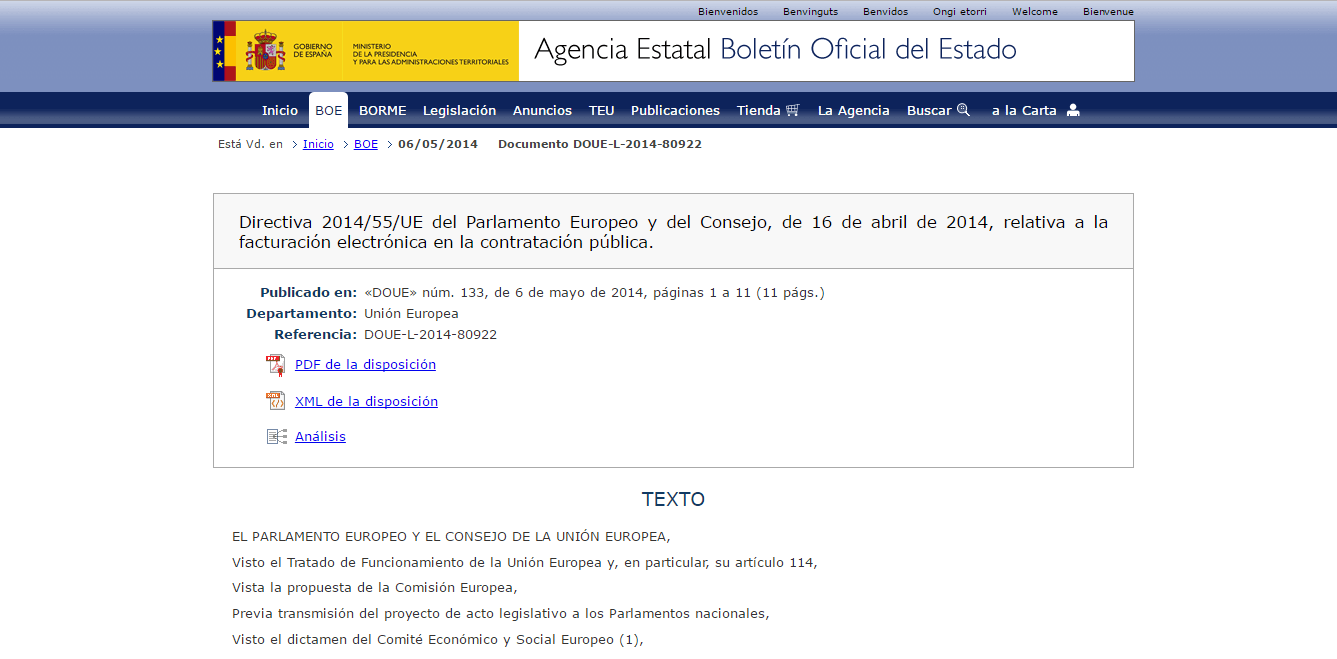The electronic invoicing law has recently been in force for two years in Spain. That is why today we want to dedicate this post to explain how to implement electronic invoicing in a simple way.
The implementation of electronic invoicing can be seen as a challenge, especially if the level of digital transformation in the company is rather low. However, the change is worthwhile, since, apart from being mandatory for suppliers in the public sector for invoices of special economic importance, electronic invoicing is a great opportunity to improve management, reduce costs and, in short, grow the business.
Currently there are solutions that facilitate the implementation of electronic invoicing in our company. Ideally, they should be able to be integrated with the rest of the management tools we are using for an integral management and optimization of our e-business tools. Otherwise, there could be complications derived from having to work with two independent programs, such as duplication of information and an extra and totally unnecessary workload.
In this article we will make a simple approach on how to implement electronic invoicing in order to guide interested companies to carry out its implementation either integrated in an integral management software of the company – ERP-, in other management tools -CRM, SCM-, or in an isolated way.
In addition, if you follow the recommended procedures in the following section, you will be ensuring compliance with the standards required by the regulations regarding electronic invoicing if you are a supplier to the public sector in Spain, facilitating compliance with the requirements established by the regulations thanks to an automated solution.
Keys to implement electronic invoicing (Spanish market)

Considering that the current Spanish regulatory framework, in line with European guidelines, is favorable to digital invoicing, apart from the mandatory nature in the aforementioned case, all companies that wish to do so have the possibility of benefiting from this new invoicing model.
Regardless of their size and sector, companies of all types will find the change positive. Making a successful transition to electronic invoicing may seem complicated, but it will be much easier if we follow the following keys:
Choosing the right electronic invoicing software
Choosing the e-invoicing software that best suits your company’s needs is an essential decision. It will be decisive in making a successful transition.
Some of the criteria to select the solution that best suits your business are:
- Simple and intuitive operation: Make sure that the solution you choose combines features and performance that translate into simple and intuitive operation.
- Functionalities that respond to your needs: for example, having a modular software that can change and grow as the company requires.
- It must enable the management of the digital invoicing process in a comprehensive and transparent way: not only for the company, but also for suppliers and customers.
In the case of having to invoice electronically with the public administrations, we need a computer program that generates them in accordance with the requirements established in the regulations.
Among other aspects, you must ensure that the solution complies with the recommended format and allows both the issuance and automatic sending of invoices through the General Entry Point for Electronic Invoices or FACe.
Apart from the mandatory cases, the paper format option must be offered in the case of the rest of the invoices and there must be express consent for this, revocable at any time, so we must have applications that allow them to be issued in both formats.
- Automated Invoicing Process: In order to save costs and time, it is essential to have a solution that fully automates the invoicing process.
- Full integration with other systems: In order to guarantee the authenticity and integrity of invoices, while creating an environment of trust from which e-commerce in particular will benefit, full integration with other systems is required.
Thanks to a strategic integration, in short, the programs work together, avoiding duplications and errors both in invoicing and in the rest of the business management processes.
- The digital signature as a key piece: The digital signature is the key piece you need to implement an electronic signature system. Authentication is required in order to be able to interact with the Public Administration and/or suppliers of a certain level. Make sure that the solution you choose has an integrated authentication system, such as viafirma e-Invoice.
A complete digital transition
Electronic invoicing, in fact, should be seen as part of a broader digital transformation project, leading to fundamental changes in the company through initiatives aimed at integrating management needs into an ERP, facilitating the electronic exchange of documents or even delegating electronic signatures, thus facilitating mobility.
This means, on the other hand, taking care of data quality through the proper integration of the different applications for a management that does not suffer fragmentation problems in local, cloud and hybrid environments and, at the same time, allows a perfect multiplatform operability.
Electronic invoicing: A world of advantages
As we have pointed out, there are numerous advantages provided by this invoicing modality. Not only because the new times lead to it, and more and more companies are invoicing electronically, but also for the simple reason that the change can make our company gain a lot.
Both when it comes to managing it more practically and efficiently and in terms of improving business figures. These are advantages that are benefiting both the public sector and the companies that implement it. An option that in turn represents a clear competitive advantage in the current context marked by the digital era.
In addition to being mandatory for suppliers of the Spanish Public Administration since January 15, 2015 (law 25/2013), which implies being signed with an electronic signature based on a recognized certificate, among other requirements, it involves countless positive aspects for both the sender and the receiver.
From greater traceability of exchanges to agility in collections for companies to such important advantages as greater security, time savings, space and simplicity, with the consequent increase in business efficiency.

Wait, what about the rest of Europe?
Okay. We’ll save that for another article, but we’ll give you a sneak preview now. As we were saying, this invoicing model, in short, is a great ally to be more competitive, since, among other advantages, it also facilitates the issuance, storage and access to invoices, while saving costs, improving productivity and profitability of the companies.
Not surprisingly, many of its advantages are associated with the great opportunities offered by the current digital context, helping to successfully face the enormous challenges it poses in the difficult globalized market.
The so-called Digital Single Market (DSM) in Europe is a clear example of the opportunities associated with digital transformation in general and the digital invoicing process in particular.
Directive 2014/55/EU, requires Member States to make the use of electronic invoicing mandatory in public procurement processes as of November 2018, with the aim of facilitating cross-border commercial relations. This will require the creation of a common standard that is interoperable. A standard that is just around the corner, as the Commission has given itself until May 27 to publish it.
What about FACe and the Spanish standards, will our e-invoice tool be compatible? You’ll have to wait for the second part of this article to find out 😉
